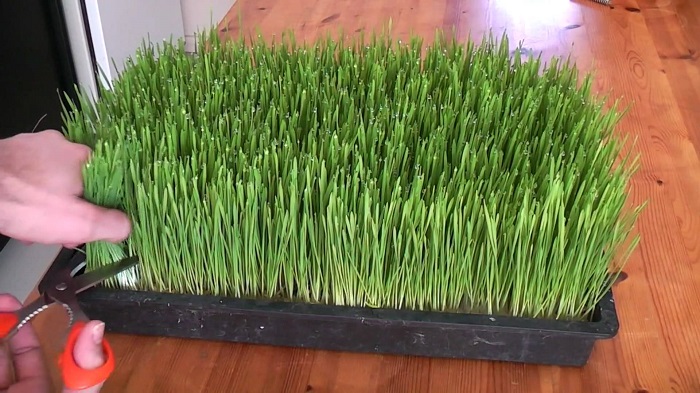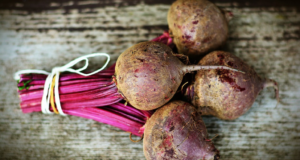There are many benefits to growing grass indoors. For example, wheat and rye grasses are very healthy if you juice them. Also, if you can spare some sprouted seeds, they make a great addition to oatmeal, bread and other recipes. Additionally, indoor grasses in pots bring the green inside in winter and help beat winter blues.
How to Start Wheatgrass and Rye
First, decide how much grass to grow. A 10 inch x 10 inch tray will take one cup of seed to yield approximately 10 ounces of juice. If you want a supply of grass to add nutrition to your winter diet, you will only need a tray or a couple of pots; you can cut the grass you need and re-seed when shoots are no longer being produced. You may want to sprout seeds at intervals of a week or so throughout the winter, to provide you with a supply of wheatgrass that is continually being refreshed by new sprouts. You also can grow a larger tray of grass or several trays, if you have space and you want to attempt transplanting in the early spring. Obviously, this method is not going to cover multiple acres, but you can grow enough to test the grains in a smaller plot or cover a plot intended for later-sowing crops.
Just 30 Grams Of This Survival Superfood Provides More Nutrition Than An Entire Meal!
Use sterile soil if possible to discourage mold growth. Wheatgrass is extremely easy to grow given the right conditions, and will grow quickly. For rye, you may want a container with better drainage as it grows a bit more slowly. Cooler and drier indoor air is generally best for grasses indoors, versus warm and humid, to prevent mold growth.
Here are a few basic steps to get started.
- Soak your seeds overnight, in water just covering them.
- Sprout your seeds in a jar or sprouter. You can follow our sprouting instructions.
- Place a thin layer of sterile soil in your tray or pots. Plant your sprouts on top of the soil, and thoroughly moisten. Leave in a dark area.
- Cover, and water thoroughly daily (if needed) to prevent drying.
- After four days of growth, remove the cover and move to an area of indirect sunlight. You can also grow grass under full-spectrum lighting
- Harvest grass with scissors when each shoot splits into two blades. This will take about a week or two. Cut the whole grass shoot and consume immediately, or refrigerate for up to two weeks.
- If you intend to transplant grass, allow it to regrow indoors without being harvested, and begin your next wheatgrass crop in a different tray. However, if you are not going to keep the plants, you can dispose of them into the compost and begin again.
Using Grasses in Food
Wheatgrass is an excellent source of potassium, iron, vitamin A, vitamin C, and many other vitamins and minerals, as well as dietary fiber. Some claims suggest that a pound of wheatgrass is worth the nutrition of 23 pounds of vegetables! Rye grass has much the same nutritional value and flavor as wheatgrass. However, most of those nutrients are not accessible without juicing.
Hand-cranked grass juicers needn’t be expensive, but will be an integral part of your kitchen in the winter months. If you’re considering a juicer, look for a stainless-steel model that clamps to a table or countertop; it will last longer and reduce your labor. One pound of harvested grass will yield about 12 ounces of juice.
The Best Kept Secret In Indoor Self-Reliance Gardening…
Many people enjoy mixing this with the juice from an apple or carrots to sweeten it. It can, however, be enjoyed on its own; just remember how many vitamins you’re getting out of it and drink it down.
Transplanting Your Grass in Spring
You may be able to move the plants outdoors as soon as the soil can be worked. If your region is prone to late frosts, move trays outdoors on warmer winter days to harden plants before transplanting, or place plants in cold frames to protect them from the harshest weather. Eventually, you can tear the root system and work the grass a little into the soil. If the soil is kept moist, the roots will take hold where they are and the grass will rebound, helping with soil retention and preventing weed growth.
If you wish, you can start letting the plants grow and go to seed. In the late summer and fall, you will be able to harvest grains for food, as well as save seeds for next year’s winter grasses. This way, you and your family will never be without the nutrition you need to be healthy and strong.
What advice would you add on growing wheat grass and rye grass? Share your tips in the section below:
 Off The Grid News Better Ideas For Off The Grid Living
Off The Grid News Better Ideas For Off The Grid Living




